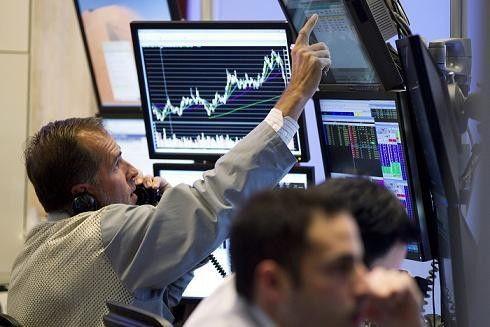Jobs Report 2011: Six Things the Bears Find Inspiring

Stocks were rising Friday on the September jobs report, with many analysts calling the 103,000 jobs created last month encouraging and others saying it confirmed their view that early August economic reports exaggerated U.S. weakness.
But the surprisingly large number -- most analysts forecast 25,000 to 60,000 more jobs -- apparently did nothing to turn any of the bears into bulls.
Here are six reasons the latest report is not making believers out of the doom-and-gloom crowd.
1. Given that this is the 27th month into the expansion, historical data suggest that payrolls would be up about 200,000 per month. Even including the return of the 45,000 Verizon workers, the Labor Department's 103,000 was half of what it would have been in most recoveries.
2. Manufacturing was down 13,000 in September, after a 4,000 job decline in August -- the first back-to-back declines since this time last year and the largest monthly drop since August 2010, David Rosenberg, chief economist at Gluskin Sheff + Associates Inc. said in a client note. Durable goods industries lost another 8,000 and posted the first successive loss in jobs since the November/December period of 2009.
3. The number of industries hiring is shrinking. Check the private sector diffusion index: it fell for the second month in a row from 55.6 to 55.4, its lowest level since last year, Rosenberg said.
4. The household survey, which had a top line number of 398,000, was largely part-time. Full-time employment practically stagnated. Further, those working part-time for economic reasons rose 444,000 to stand at 9.3 million, the highest level in a year.
5. The number of people out of work for 27 weeks or more is still at 6.2 million, up from a year ago, according to Challenger Gray & Christmas. The alternative measure of unemployment, which takes into account people who have stopped looking for work, but still want a job, as well as those working part-time because full-time work is unavailable, increased to 16.5 percent, John challenger told TheStreet.com in an email. That figure has been on the rise from a recent low of 15.8 percent in May.
6. Enjoy this while it lasts ... because it won't: U.S. employers announced the most job cuts in more than two years last month, according to Challenger, Gray & Christmas. Rosenberg calls that ominous.
Here is a summary of the September report by Morgan Stanley economist David Greenlaw: While this report was much better than consensus expectations, it still points to a very weak labor market. Indeed, excluding strike effects, private payroll employment growth has been below 100,000 in four out of the past five months.
If this trend continues, we are likely to soon see a slow but steady rise in the unemployment rate.
© Copyright IBTimes 2024. All rights reserved.






















